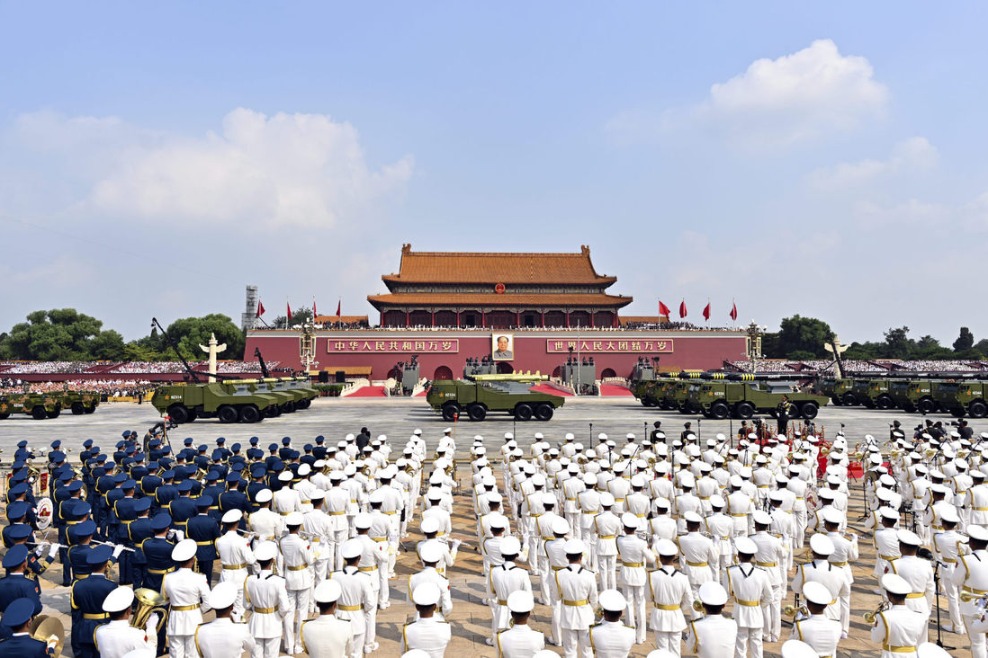Defusing debt risks
Collective actions needed to maintain financial stability in Asia

Collective actions needed to maintain financial stability in Asia

Asian developing countries are faced with a severe debt situation. The current debt-to-GDP ratio of the developing countries in Asia is much higher than the international redline for developing countries of 60 percent. According to the International Monetary Fund, the general government debt-to-GDP ratio of emerging and developing economies in Asia was 71.8 percent in 2021, a level which is second only to that of Latin America and the Caribbean.
And, in 2021, the external debt of emerging and developing economies in Asia increased by 20.7 percent compared with the level of 2019, the fastest growth rate among all emerging markets and developing economy regions.
There are mainly three factors driving the debt risks.
First, the COVID-19 pandemic has pushed up the debt levels of some countries. The pandemic has caused a substantial increase in government public spending, while slowing or even shrinking fiscal revenue growth, leading to a sharp rise in government deficits. The pandemic has also caused a decline in the income of some countries from overseas remittance. These factors have exacerbated the difficulties of some countries in repaying their foreign debts.
Second, the tightening of monetary policy by the United States is increasing the debt burden of Asian countries. The bond yields in Asian economies have been pushed up, chafing debt risks. Meanwhile, with the tightening of the Fed's monetary policy, the US dollar has entered an appreciation cycle, and the currencies of some Asian economies have depreciated sharply against the US dollar, increasing their burden from debts on US dollar terms.
Third, the Russia-Ukraine conflict has further aggravated the debt difficulties of Asian countries. The escalation of the crisis in Ukraine has led to soaring prices of commodities such as energy and food, which has brought about serious debt payment difficulties to developing countries dependant on commodity imports. In Sri Lanka, for example, rising global food and oil prices have hit its balance of payments and brought about a severe shortage in its foreign exchange reserves, forcing the country to suspend its foreign debt repayments. Financial tensions brought about by the Russia-Ukraine conflict have also pushed up financing costs for developing countries.
But despite being confronted with relatively large debt pressures, the debt risks of Asian countries are generally under control. Asia still maintains a relatively high economic growth rate, and the international reserves of Asian economies are relatively sufficient. But active policies are still needed to defuse the debt risks.
First, it is important to balance short-term economic stimulus and medium-term fiscal consolidation. At present, some Asian countries are facing the dual pressure of slowing economic growth and rising inflation. Against the backdrop of successive interest rate hikes by the Fed, most Asian countries have also begun to tighten their monetary policy, and relied on their fiscal policies to stimulate the economy, which may lead to a further rise in government debt. To this end, once the economic performance improves in the future, policymakers should conduct fiscal consolidation in a timely manner to avoid long-term fiscal deficits and ensure the sustainability of public debt.
Second, it is important to strengthen regional financial cooperation to ensure financial stability in Asia. The development of local currency bond markets in Asia should be further promoted. In doing so, Asian countries can reduce their over-reliance on external financing, cut the risk from currency mismatches, and alleviate the debt burden caused by the appreciation of the US dollar. It is important to accelerate the development of the Asian credit rating system, improve the pro-cyclical rating methods for rating agencies, and prevent rating agencies from amplifying debt risks and exacerbating cyclical fluctuations in the macro economy. The role of Asian regional financial arrangements must be further enhanced so as to enhance their capabilities in economic surveillance, crisis prevention, and crisis resolution and maintain financial stability in Asia.
Third, Asian economies must work with the international community to resolve the debt problem. The solution to debt issues has always been an important part of the G20 agenda. Indonesia holds the rotating presidency of the G20 this year. Asian countries should actively participate in multilateral debt coordination with other countries, and urge all parties to implement the G20 Common Framework for Debt Treatments beyond the Debt Service Suspension Initiative. International and regional financial institutions, such as the IMF and the World Bank, should also increase financing support for relevant countries and actively ease the debt burden of developing countries.
China has been striving to help developing countries deal with their debt problems. The country initiated and took an active part in the G20 Debt Service Suspension Initiative, offering the largest amount of debt suspension among the G20 members. Meanwhile, relevant non-official financial institutions in China have also taken debt suspension actions with reference to the terms of the debt service suspension initiative. In addition, China has waived the interest-free loans of several least-developed countries in a successive manner.
Going forward, China and Asian countries can strengthen their cooperation in the following aspects to jointly resolve the debt problem. The first aspect is to establish bilateral currency swap lines with countries in need to increase their foreign exchange reserves and prevent their sovereign credit ratings from being lowered in a continuous manner, and to help them stabilize their economies and financial situations. The second aspect is to provide assistance and loan support for relevant countries and help them solve their balance of payments problems. The third aspect is to continue strengthening cooperation with Asian countries under the Belt and Road Initiative to spur stable and sustained economic growth in the Asian region, which is the key to resolving debt problems in the long run.
The author is an associate researcher with the Institute of World Economics and Politics at the Chinese Academy of Social Sciences. The author contributed this article to China Watch, a think tank powered by China Daily. The views do not necessarily reflect those of China Daily.
Contact the editor at editor@chinawatch.cn


































